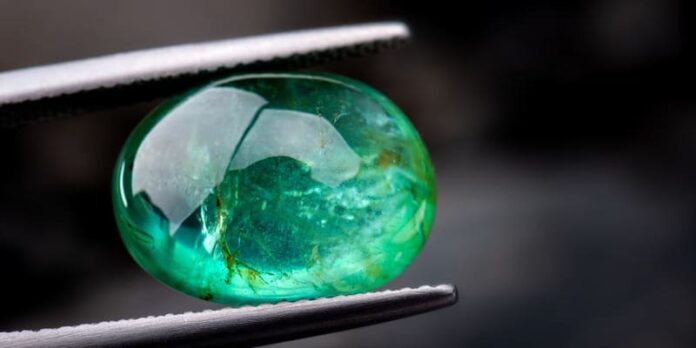Jade is a stone that’s particularly popular in cosmetics for its anti-aging benefits. –Nopadol Uengbunchoo / Getty Images pic
NEW YORK, Oct 28 — At the crossroads between holistic beauty and spirituality — or parascience — one major trend of the moment involves using gemstones and crystals as part of your beauty routine. Stones like jade, quartz, moonstone and amethyst are progressively making their way into bathrooms in the form of rollers, facial skincare and even makeup, bringing their energy and virtues firmly into the mainstream.
Who would have thought it? Gemstones and crystals are no longer the preserve of jewelers. And while lithotherapy — from the Greek lithos (stone) and therapeia (cure) — may be nothing new for those who have long believed in the power of stones to fight against stress, certain sleep disorders, or even certain forms of pain, the concept has recently been making inroads into the mainstream, notably in the cosmetics industry. Brands and chains, as well as beauty salons, are all starting to offer products and treatments based on stone and crystal extracts, whether to fight skin aging, boost radiance or soothe skin.
A new vision of beauty
The pandemic has changed consumers’ beauty habits significantly. After shunning makeup in favor of skincare, people have gradually turned to a more authentic approach to beauty. Gone are long-winded formulas, as consumers now favor quality over quantity, naturalness over superficiality, prevention over correction. Holistic beauty, which takes an overarching view of the whole process — diet, exercise, personal care, etc. — has gradually started to replace conventional approaches to beauty. The social network TikTok, mainly used by Generations Z and Y, counts dozens of hashtags associated with holistic beauty, which in turn boast some tens of millions of views.
This quest for authenticity has been picked up by the cosmetics industry. It has resulted in the return of plant-based cosmetics and age-old traditional beauty remedies, which are proliferating on social networks, as well as the emergence and subsequent boom in prebiotic cosmetics, nutricosmetics and ancestral arts and techniques such as Kobido — not to mention the arrival gemstones and crystals in our beauty kits.
To a lesser extent, this craze for gemstones can also be explained by growing public interest in parasciences, or esotericism, especially among younger people. This has been shown by many studies published during the successive Covid lockdowns. A French survey carried out by Ifop for Femme Actuelle Astro Consult’, for example, highlighted an increasingly marked taste for astrology, palmistry, bewitchment, clairvoyance, numerology, and cartomancy, which have seen growing popularity in France since the early 2000s. So, between nature and spirituality, this new interest in the power of stones — or healing with stones — is hardly surprising.
Different stones, different virtues
Some cosmetic brands have placed gemstones and crystals at the heart of their DNA, such as Lightstones Cosmetics, which offers amethyst or fluorite-based lip oils, or Roll On Jade, a specialist in semi-precious stone tools. But other, more traditional, beauty industry players are gradually getting into the game. Rollers made of jade, rose quartz and amethyst — which help fight the signs of aging — have become commonplace in the cosmetics industry, to the point that major chain stores like Sephora now sell them. This is also the case for a trendy beauty tool called a Gua Sha stone, which takes its name from an age-old traditional method, and whose anti-aging properties are also gaining many followers around the world. It comes in versions made from rose quartz, jade and obsidian.
These ancestral beauty rituals, hailing straight from Asia, and, in particular, from traditional Chinese medicine, are increasingly popular in the West, either to accentuate the effects of a treatment, or for use alone, in some ways to replace aesthetic medicine — and always in line with the underlying principle of holistic beauty: Prevention is better than cure. Some brands are now introducing gemstones and crystals into their skincare or makeup products. Payot (Supreme Jeunesse Le Masque, infused with moonstone), Resultime (Microdermabrasion Scrub Quartz and Vitamin E) and Herbivore (Amethyst Body Polish) are just some of the brands now offering cosmetics based on extracts of these stones.
The brand Huda Beauty has even launched a whole “Rose Quartz” makeup line, which draws inspiration from the crystal. The collection includes an eyeshadow palette and a plumping lip balm, celebrating Huda Kattan’s passion for rose quartz. It’s a sector that’s now dubbed lithocosmetics, and interest in these beauty rituals doesn’t look set to wane anytime soon. This is evidenced by the countless tools that can now be found in just a few clicks on the internet, including facial masks made entirely of rose quartz. — ETX Studio


